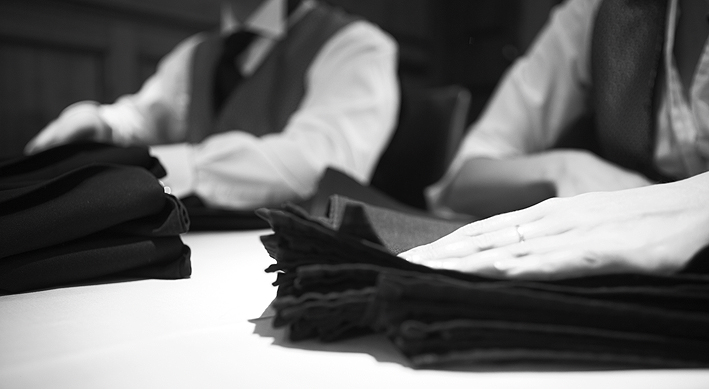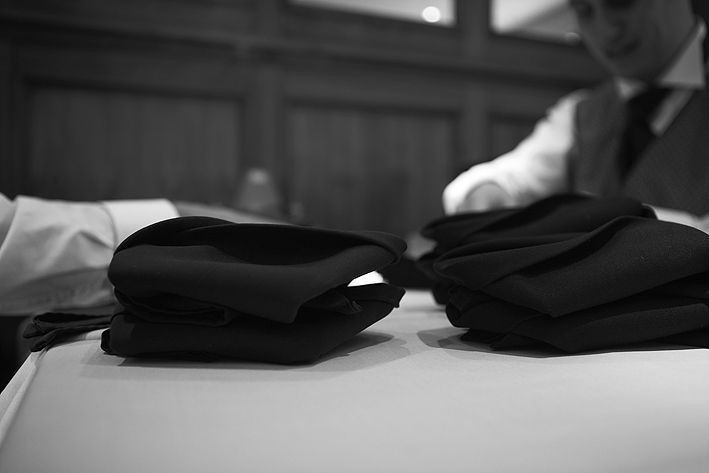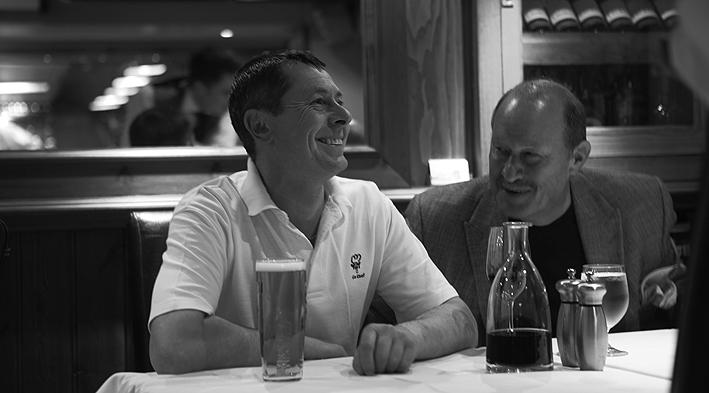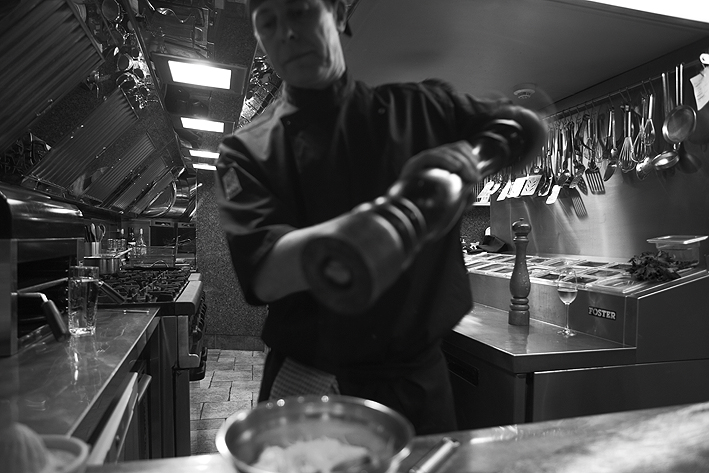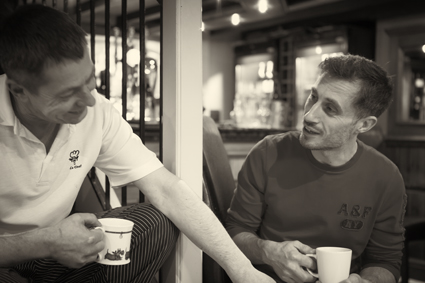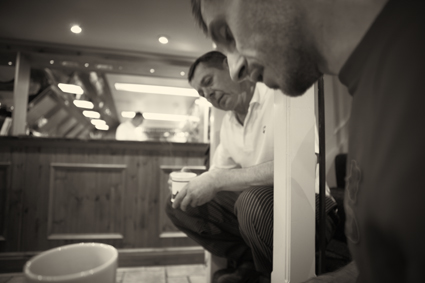WHAT MAKES US 'ESTBEK?'
At Estbek, we're proud of our achievements, which help us to offer you continuously excellent service. We are the proud winners of the 2017 White Rose Award for 'Inns and Restaurants with Rooms' and hold two coveted AA Rosettes, as well as a 4 star rating from the AA.
Years of experience and much expertise, combined with a drive for constant improvement, have led to our recognition as a restaurant displaying culinary excellence. But our biggest focus remains on making your experience special.
Signature details throughout the restaurant and rooms can be found to be quintessentially 'Estbek'. For example, in the restaurant, you will notice that all dinner place settings include a napkin folded into the shape of a dinner jacket, while all our rooms are home to handmade patchwork quilts and local artwork.
Such details are put in place by our team to ensure that your experience with us is memorable. At Estbek, we’re a small yet extremely dedicated and friendly team. We’d like you to get to know a little bit about us:
“Relax in a magically hidden village where time has stood still and you can hear the waves lapping the shoreline...”
MEET THE TEAM
OUR PROPRIETORS
DAVID CROSS - Co-owner / Managing Director
Initially trained as a food scientist at university level, and having subsequently worked within the food industry developing food hygiene and safety standards for a number of years, David has developed, with the help of Tim and the cooperation of our team, Estbek’s ever improving standards which focus on intense attention to detail and excellent customer service. He works closely alongside Jeanette with the help of the team to run the restaurant each evening. In addition to this, David has a keen interest in wines and close friendships with many winemakers, having undertaken several diploma examinations in wines and spirits, helping us further expand our listings. This expertise and a long dream of David's have been the motivation for the building of our wine cellar - brand new for summer 2018! Watch out for our reinvented wine list.
You will often find David's parents - Brian and Brenda - at Estbek; great friends to all the staff and always helping keep our gardens and courtyard in perfect shape!
TIM LAWRENCE - Co-owner / Chef Patron
Tim’s expertise in the kitchen has been the true driving force behind the recognition of culinary excellence at Estbek - gaining us those two coveted AA Rosettes - continually developing and improving the content and style of our menu to make the most of seasonal local produce and fresh ingredients, of which we have a plethora thanks to our geographical link with the sea and moors. Tim is our Head Chef here at Estbek, and his vast experience is derived from previously working as Head Chef at Trenchers Restaurant in Whitby for 25 years with its original founder and now friend of Estbek, Terry Foster.
Passionate about cooking, Tim is always sure to handle ingredients - particularly fresh fish - delicately, so as to not overpower the natural flavours, and let them 'speak for themselves,' a practice he likes to teach. So much so, he wrote a recipe column for Yorkshire Ridings magazine for 6 years!
THE TEAM
JEANETTE - Restaurant and Accommodation Manageress
Jeanette joined our team back in September 2009, and having many years of waitressing under her belt, brought a wealth of expertise and experience to our team. Jeanette was soon promoted to head-waitress, where she has since been responsible for team training, with the help of David. An irreplaceable member of the team, Jeanette was subsequently promoted to Restaurant and Accommodation Manageress based on her passion for Estbek, a dedicated team leader and a friend to staff and customers alike.
SOPHIE - Waitress
Sophie joined our team back in 2004, only 4 weeks after we bought Estbek and has since proved herself as dedicated and passionate about Estbek. In 2011, she stepped down from her role as head-waitress to focus on other endeavours, but has since helped out regularly in the restaurant. Sophie is currently on maternity leave until Summer 2018, and we look forward to welcoming her back.
COURTNEY - Head Housekeeper
Joining our team back in 2014 where she helped out with Saturday housekeeping, Courtney has become a vital cog in the Estbek machine and has progressed to the role of Head Housekeeper. She may work behind the scenes, but Courtney is responsible for ensuring that the perfect details are in place for your stay in our luxury rooms.
GEORGINA - Housekeeper / Business Development Intern
Georgina first joined our team back in April 2011, where she worked as a weekend housekeeper. She briefly acted as Head Housekeeper before heading to university to study business, and Courtney assumed the role. She continued to help out in the holidays, however this year, we’ve put her university skills to the test and hired her as a Business Development Management Intern, to help us continually improve what we has to offer.
HISTORY
The earliest mention of a settlement at Sandsend occurs in a document dated 1200 AD. However, it is known that the Vikings found it a good landing place as early as 876AD and planted their standard, a raven, on Raven Hill. Before them the Romans knew the district and Ptolemy wrote about Dunnum Sinus, the bay of Dunsley, in his great classical works.
Sandsend did not exist at the time of the Domesday Book, being part of the manor of Lythe, but it is said that a heathen temple existed, built for the worship of Thor, god of Thunder, and East Row was called Thordisia; a name first recorded in 1135 which remained until 1620 when cottages erected for alum workers became known as East Row.
Sandsend, a village of two halves, was previously a village of contrasts, one rural and the other formerly industrial. Although today the visitor and resident alike would be hard put to picture the village under a pall of smoke, grime and stench with which it then suffered. That it is a village of two halves came about through its situation on two distinct becks. The north most from Whitby being named Sandbeck and the nearest Estbek, which is the watercourse that is first crossed on the coast road from Whitby three miles away. The high tongue of land which separates the two is called The Riggs.
The village and environs today owe their appearance to the alum industry that began in the early part of the 17th century. It is recorded that the Alum Works at Sandsend and Mulgrave attained a reputation for production and quality that far outstripped that of any existing competitors in Yorkshire, which was then the centre of this important trade.
The story of alum in the district is a fascinating one and well worth a study itself, not least because corruption, mismanagement, piracy, smuggling and bad practice played a huge part in the history of the alum trade on the North East coast.
It is known that the workmen's conditions in Sandsend were terrible. Described as "poor snakes, tattered and naked, ready to starve for want of food and clothes." Many were not paid wages for month after month.
Estbek House itself played a key role in this story. It was erected in the 1750's to 1770's for the use of the manager of the Alum works, who also had his offices here too. In the absence of early records it is not known who erected the property. But the mines, and indeed, most of the villages were under ownership of the Earl of Mulgrave. It is probable that he was responsible for its building; which would also account for the lack of early deeds.
The alum industry went into decline in the 19th century, and was exhausted at Sandsend by 1870, long after it had ceased in other areas. The history of Estbek House for the next 25 years or so is unclear. However, for the greater part of the 20th century, Miss Brunton ran the property as a private boarding house. She was employed by the Admiralty at Estbek House, her guests came by 'Invitation only'.
Architecturally, Estbek House is a grade II listed regency building, described as two and a half stories high and basement, built of course square stone with herring-bone tooling, of which the lower courses are much larger. Two bays across, of extra wide proportion, eight steps lead to a replaced central six panel door under a late 19th century quasi-classical pedimented door case with an oblong fan light. At roof level, under a modern pan tiled covering, there are stone copings and shaped kneelers; tone chimney with cornice bands, and moulded eave cornice.
Inside, while there has been many recent improvements, investigations revealed original features that included reused timbers in the roof construction, visible in Florence. The woodwork to be seen includes what appears to be a ships spar, and beams showing grooves that may have been originally used in the construction of earlier wall partitions.

